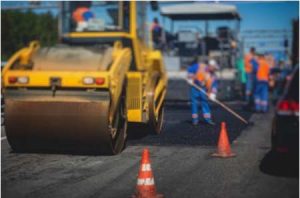 According to the Bureau of Labor Statistics, workers stuck by vehicles or mobile equipment, and transportation incidents, account for the highest number of on-the-job fatalities (per the National Safety Council). The BLS reported that in 2022, there were around 96,000 work zone crashes, resulting in around 37,000 injuries and 891 fatalities. Those numbers increase every year as more and more road workers and motorists are injured or killed.
According to the Bureau of Labor Statistics, workers stuck by vehicles or mobile equipment, and transportation incidents, account for the highest number of on-the-job fatalities (per the National Safety Council). The BLS reported that in 2022, there were around 96,000 work zone crashes, resulting in around 37,000 injuries and 891 fatalities. Those numbers increase every year as more and more road workers and motorists are injured or killed.
Staying Safe
Traffic work zone crews should have a traffic control plan, and do everything within their power to be aware of the traffic flow and not get in the travel path of vehicles. They should wear fluorescent orange-red or yellow-green (hi-vis) reflective vests both day and night. Workers should remember to walk facing traffic. They should also be aware of where the pinch points of the traffic control plan are in the work zone and be very cautious around those areas.
Traffic Work Zone Safety
Work zones are very dangerous areas. Not only have motorists become more inattentive and distracted, but the type of work being performed on bridges, roads, and by-ways often involves other hazards. Contractors for projects should make sure their crews have a traffic control plan, that they use signs to assist workers and motorists alike, and use traffic control devices to slow and direct vehicles. Protections should be used whenever possible, and workers should always remain alert to and face oncoming traffic. Flaggers should be used where needed, and the flagger stations and work areas should be properly illuminated at night.
PUT ON THE BRAKES…KEEP WORK ZONES SAFE!
Download flyer: STOTW_1213_Work_Zone_Traffic_Safety Download Spanish flyer: STOTW_1213_Work_Zone_Traffic_Safety_esp

